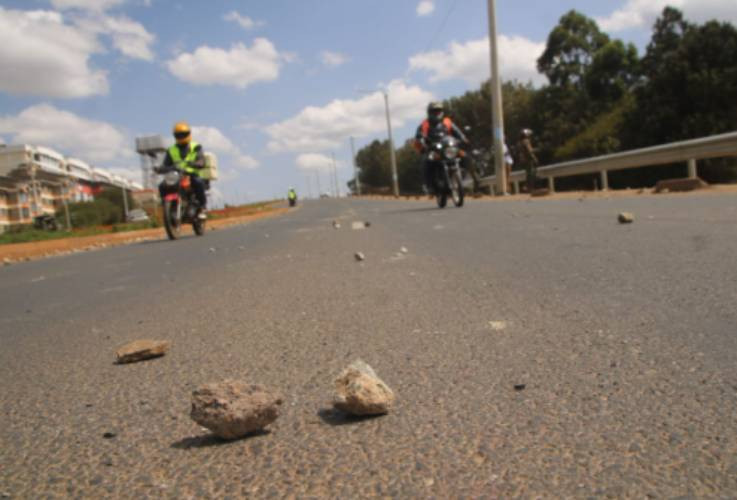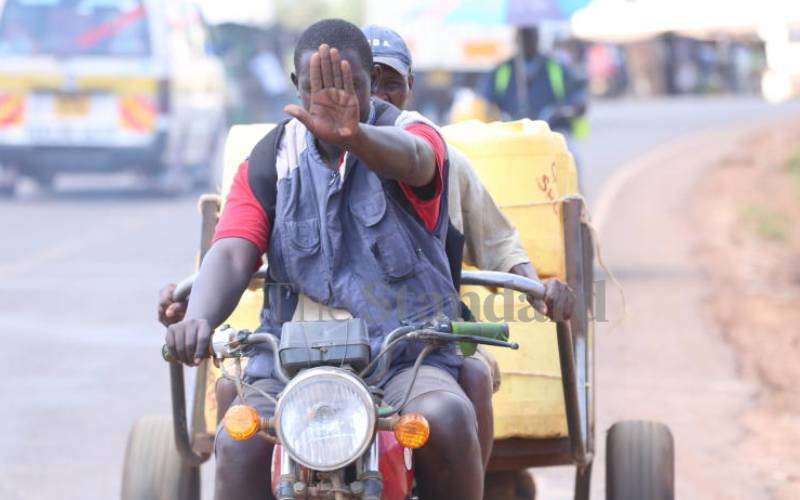By Josphat Ngonyo
I wish to correct an erroneous notion, replayed in the media, that conservationists are against the completion of the bypass road and general infrastructure development. What we are against is impunity.
I am a Kenyan by birth and I cherish what our government has done to develop our road network. Like everyone else, long traffic jams do not amuse me; they not only irritate, but also make us inefficient.
It is important, however, to set the record straight.
Africa Network for Animal Welfare (ANAW) made a joint appeal against the encroachment of Nairobi National Park with the East African Wildlife Society and Paula Kahumbu to the National Environment Tribunal (NET) on March 20, 2012.
In our application, we specifically asked NET to stop the construction of “a section of the Southern By-pass that would encroach into Nairobi National Park” and to order Kenya National Highways Authority (KeNHA) to conduct a fresh environmental impact assessment (EIA) study and to redesign the road in a way that would avoid encroaching into the park.
The appeal was initially stalled because the respondents, Nema, Ministry of Roads and KeNHA, made a preliminary objection, saying that our appeal was time barred and that the Tribunal lacked the jurisdiction to entertain it. This objection was heard on August 1, 2012, and the Tribunal ruled in our favour, allowing the appeal to proceed.
A full hearing ensued in which lawyers for all parties made presentations. The Tribunal also physically visited the site on October 8, 2012, where they confirmed the proposed bypass clearly encroached into the park if constructed per plan.
This fact became one of the main issues hotly debated before the Tribunal. In her witness statement, Dr Kahumbu pointed out that although KeNHA intended to encroach into the park, it had not been degazzetted as is required by the law.
The ANAW notified the Tribunal, that Nema’s license to KeNHA clearly stated that the bypass must not encroach into the park. Furthermore, KeNHA had not only accepted this condition, but had actually confirmed this in writing implying that they were committed to abide fully by the conditions in place.
Nema, KeNHA and the roads ministry raised their own arguments. For one, Nema stated among other things, that it had approved the construction after considering the likely negative impact the road would have on the park.
On its part, KeNHA explicitly stated that it had presented a request to Cabinet to be allowed to excise part of the park for the construction of the bypass and that the matter had been taken to Parliament in August 2012, but was deferred to allow consultations between it and KWS.
“The appeal is premature because consultations over the contentious segment of the road are still going on,” said Paul Omondi, an engineer with the roads authority. KeNHA, it later emerged, had offered KWS Sh1.6 billion ‘compensation’ to help the wildlife body acquire more land on the southern side of the park.
The easier option?
Other witnesses included the expert who conducted the EIA study as well as a senior official with KWS and a surveyor.
Stay informed. Subscribe to our newsletter
While making its ruling, the Tribunal considered all the testimonies and evidence presented. Members of the Tribunal felt that Nema should not have approved the construction of the entire bypass including the contentious area within the park.
“Nema ought to have required KeNHA to fully comply with the law regarding acquisition of a protected wildlife area, including requirements for the degazzettement,” said the Tribunal.
In line with this finding, the Tribunal ordered KeNHA to “fully comply with all legal requirements for the acquisition” of the relevant section of the park. It also stopped the intended construction of the road in the said section. More importantly, the Tribunal ordered Nema to comply with “both substantive and procedural provisions of law” before issuing EIA licenses for such projects.
However, what is of foremost importance and what has not featured in the public discussions on the matter is the fact that a transport corridor was set aside for future development of the road and railway in 1957.
Today, this corridor is occupied by private developers who have erected residential buildings. Why is it easier for Government to encroach on the park instead of dealing with those who have occupied the corridor?
For a Government respected for securing court orders to re-acquire illegally allocated transport corridors in Runda, Mlolongo and Thika Road, it is strange that it has not even considered this as an option and is instead talking of degazzetting a national park, setting a wrong precedent.
It is time the relevant authorities came out clean; why are they protecting people who have constructed on the relevant transport reserve?
The writer is Executive Director for Africa Network for Animal Welfare.
 The Standard Group Plc is a
multi-media organization with investments in media platforms spanning newspaper
print operations, television, radio broadcasting, digital and online services. The
Standard Group is recognized as a leading multi-media house in Kenya with a key
influence in matters of national and international interest.
The Standard Group Plc is a
multi-media organization with investments in media platforms spanning newspaper
print operations, television, radio broadcasting, digital and online services. The
Standard Group is recognized as a leading multi-media house in Kenya with a key
influence in matters of national and international interest.
 The Standard Group Plc is a
multi-media organization with investments in media platforms spanning newspaper
print operations, television, radio broadcasting, digital and online services. The
Standard Group is recognized as a leading multi-media house in Kenya with a key
influence in matters of national and international interest.
The Standard Group Plc is a
multi-media organization with investments in media platforms spanning newspaper
print operations, television, radio broadcasting, digital and online services. The
Standard Group is recognized as a leading multi-media house in Kenya with a key
influence in matters of national and international interest.








